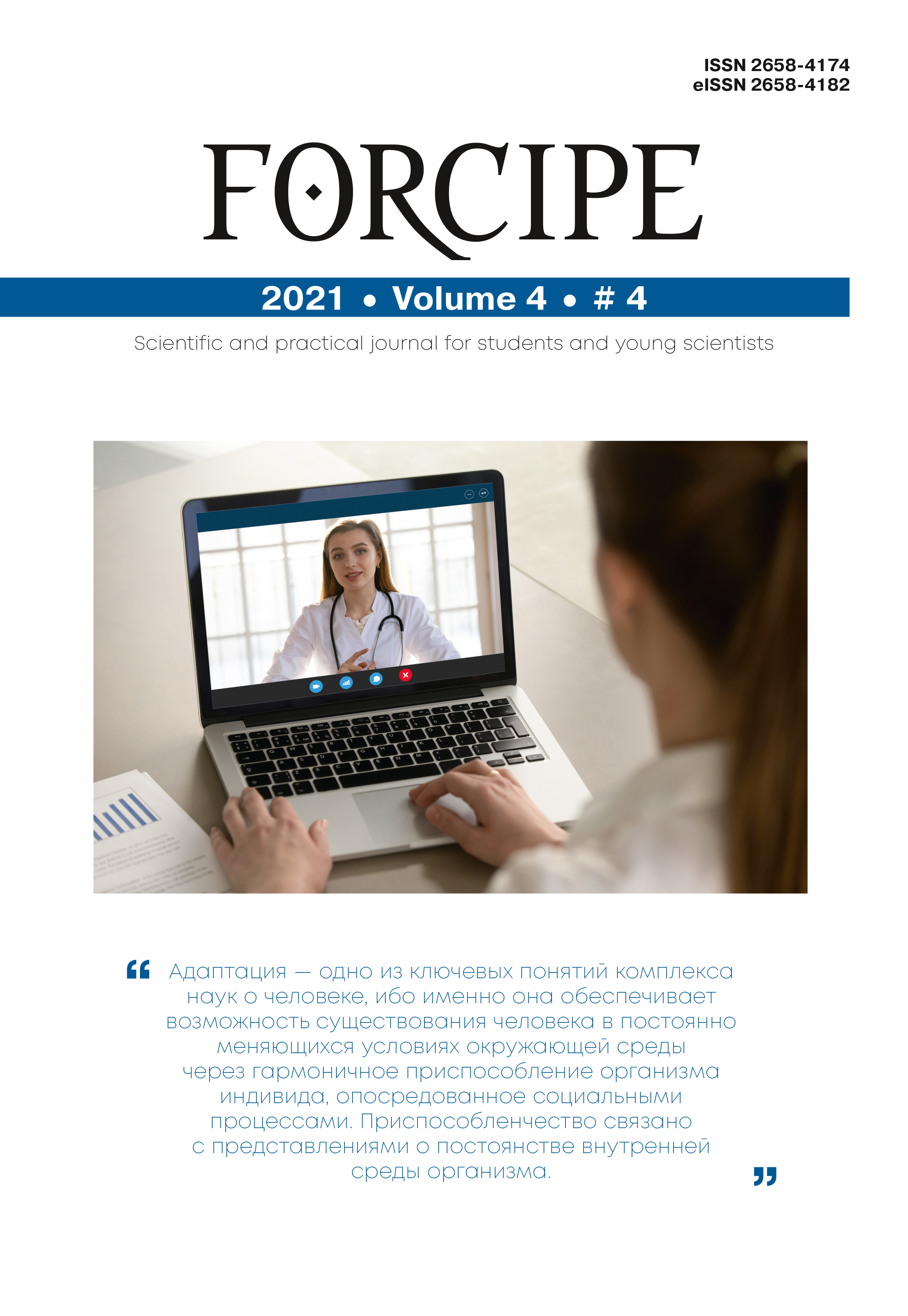CT CHARACTERISTICS OF ACUTE PULMONARY EMBOLISM (CLINICAL OBSERVATION)
Abstract
The article discusses in detail the options for the course and CT diagnosis of acute thromboembolism of pulmonary artery (TPA) using two clinical examples. CT angiography with contrast and bolus administration of a contrast agent showed thromboemboli in subsegmental pulmonary arteries, changes in the structure of the right heart and interventricular septum in acute thromboembolism [10]. At the same time, in one case, changes in the lung parenchyma were not detected, and in the other, there were pronounced lungs with hemorrhages in the pulmonary alveoli and signs of pulmonary infarction. Along with the expansion of the pulmonary trunk, branches of the right and left pulmonary arteries on CT angiography, characteristic radiological signs of acute TPA in the presented patients showed an increase in the right and left ventricles of the heart without signs of right ventricular hypertrophy, flattening and displacement of the interventricular septum. Both observations indicate the importance of CT diagnosis of TPA for the timely initiation of intensive care [9].



